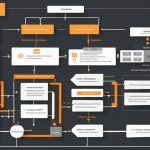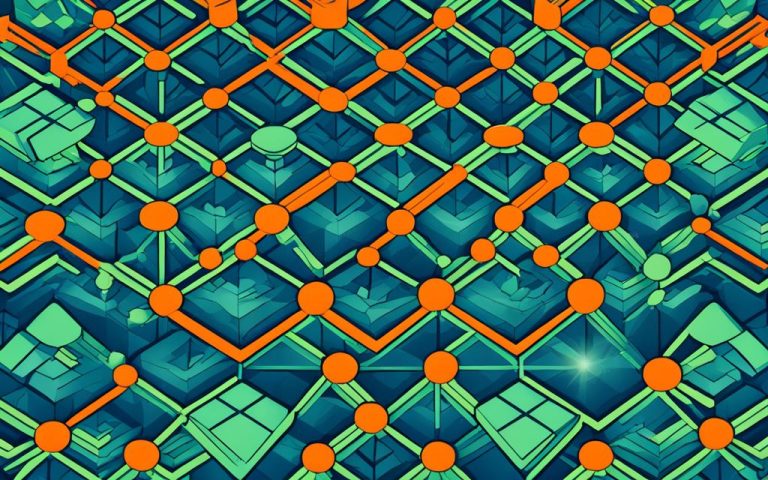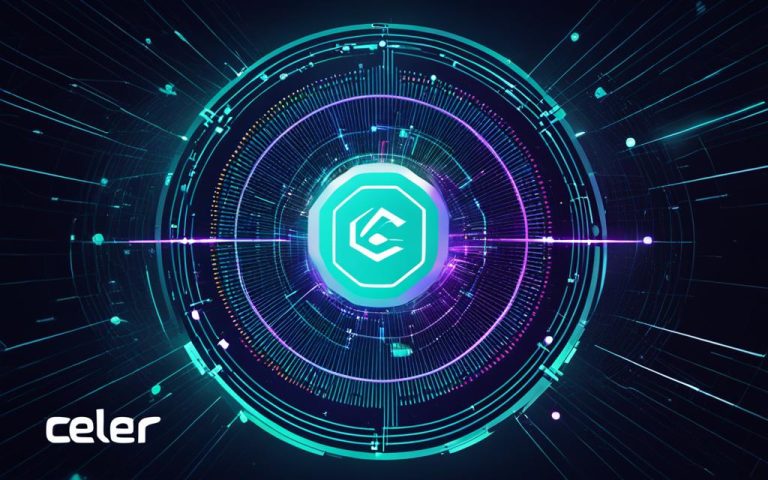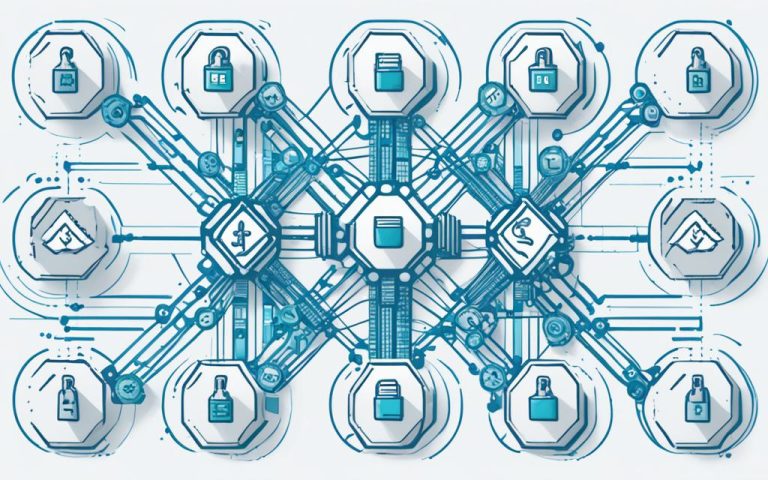Modular blockchains are a big step forward in the blockchain world. They help solve the scalability problem that older blockchains face. Unlike the old ones that do everything on one chain, modular blockchains focus on specific tasks. These tasks include execution, settlement, consensus, and making data available.
By focusing on specific roles, modular blockchains can work better and customize more. They split their tasks across different layers. This split leads to higher effectiveness and more transactions. It also gives developers the power to make their networks work better, be more secure, and cost less.
Modular blockchains are great because they work well with other networks. This opens up chances for working together and creating new things. Examples of these blockchains are Celestia and EigenLayer DA. They offer special services like consensus and data availability, helping other solutions like rollups.
Another big plus of modular blockchains is they can grow much bigger without losing quality. By separating basic tasks of layer 1 blockchains, they look to be 100 times better on each layer. This helps solve a big problem known as the “Blockchain Scalability Trilemma.” This problem is about finding a balance between not being controlled by one entity, being safe, and being able to grow.
Unlike older blockchains, modular ones let developers have more control. They can build networks that exactly meet their needs, change as needs change, and cut down on storage costs. This means users pay less money and have a better time using decentralized apps (dApps) on these scalable and safe blockchains.
Overall, modular blockchains are changing how we think about blockchain technology. They bring benefits like being able to grow, being safe, being flexible, and working efficiently. By having specialized parts and amazing features, they let developers unlock the true power of blockchain. This paves the way for the next generation of decentralized apps and networks.
Learn more about the basics of modular and monolithic blockchains here. Explore the concept of modular blockchains in this article from Volt Capital. Also, discover real use-cases for modular blockchains in the Third Web Blog.
How Do Modular Blockchains Work?
Modular blockchains change how blockchain technology works. They use a design that breaks the usual one-piece structure into smaller parts. This new setup aims to improve scalability, security, and customization. It lets blockchains work more flexibly and efficiently.
These blockchains split main tasks into specialized layers. For example, layers that handle execution, settlement, consensus, and data availability. By spreading out these tasks, developers can make each part perform better. This leads to a better functioning blockchain overall.
Execution modules take care of processing transactions and running smart contracts. Meanwhile, settlement modules resolve disputes and finalize transactions. They keep the blockchain’s financial actions safe and sound.
Consensus modules are crucial for confirming transactions and their order in the blockchain. They help reach agreement among all users, keeping the blockchain stable and trustworthy.
Then, data availability modules store and share transaction data. They make sure data is easy to get for those allowed to see it. This makes the blockchain open and accessible.
By using these specialized chains, developers can build modular chains that work best for their needs. This method offers great flexibility and customization. It allows businesses to tailor blockchain solutions to fit their unique demands.
Modular Blockchains in Action
Celestia is a modular blockchain project that shows these benefits. It offers a layer for data availability and consensus to Layer 2 blockchains. Celestia’s design solves issues with security, scalability, and decentralization by being highly scalable and customizable.
Dymension provides a network of fast modular blockchains called RollApps. This setup supports easy user interaction and smooth coordination at the back end. It promises a seamless and polished user experience.
Modular blockchains bring many perks like better scalability, adaptability, and working with different systems. But, their complex development can be a hurdle for users and creators. Still, as they grow and are tested in the real world, they hold the promise of major breakthroughs.
By adopting modularity and constantly seeking new solutions, the blockchain sector can unleash this technology’s full potential. This could revolutionize many areas and spur even more innovation.
Modular vs. Monolithic Blockchains
Blockchain technology has two main types: modular and monolithic. Each records and checks transactions, but they work differently. Modular blockains split tasks into layers. Monolithic blockchains keep everything in a single chain.
Monolithic blockchains face issues as they grow. Adding more validators means needing more powerful hardware. This limits how many transactions they can handle at once.
Scalability constraints can slow down applications that need quick transaction processing. Decentralized finance (DeFi) and enterprise solutions are examples.
Modular blockchains deal with scalability constraints better. They split tasks across different chains. This setup improves customization, efficiency, and growth while keeping the system secure.
Modular blockchains are good at meeting specific needs. They can offer special features for things like smart contracts, managing identities, and tracking supplies.
They also offer stronger security with centralized validation. Specialized validators check transactions, reducing the chance of attacks.
Organizations can create strong decentralized apps with modular blockchains. These apps can manage complex tasks and improve how users experience them.
Modular vs. Monolithic Blockchains
| Aspect | Modular Blockchains | Monolithic Blockchains |
|---|---|---|
| Scalability | High scalability due to task distribution | Limited scalability as all functions are combined |
| Customization | Greater customization through specialized layers | Limited customization as all functions are unified |
| Security | Enhanced security through centralized validation | Security relies on decentralized validation |
| Use Cases | Efficient support for diverse applications | General-purpose blockchain with limited flexibility |
The blockchain world is always changing. Both modular and monolithic blockchains are important for developing decentralized apps. Knowing the differences helps businesses and developers choose the right blockchain for their needs.
Conclusion
Modular blockchains show us what the future of blockchain technology might look like. They break down core functions into separate chains. This approach allows for better scalability, efficiency, and customization.
These modular systems attract more users and developers by making it easy to create new applications. This helps the blockchain world grow and become more popular. Even though they can be complex and face security challenges, their benefits are significant.
Modular blockchains can change to meet specific needs, making blockchain more inclusive and easy to access. Looking forward, we see a world where blockchain changes industries and improves business. The promise of modular blockchains makes the future of blockchain exciting.
FAQ
What are modular blockchains?
Modular blockchains are an exciting improvement within blockchain technology. They focus on specific tasks to make everything better. Instead of putting all tasks on one chain, they spread them out. This leads to more efficiency and opens the door for bigger advances.
How do modular blockchains work?
Modular blockchains divide the main blockchain jobs into specialized segments. Each part handles a unique function, such as making transactions or storing data. By doing this, they can be combined in many ways. This makes them flexible for different needs or projects.
How do modular blockchains differ from monolithic blockchains?
Modular and monolithic blockchains are quite different. Modular ones spread jobs across several chains for better performance. On the other hand, monolithic blockchains do everything on one chain. Because of this, modular blockchains can do more without losing speed or safety.
What advantages do modular blockchains offer?
The benefits of modular blockchains are many. They can handle more users and transactions quickly and let people tailor them as needed. This flexibility encourages more creative uses and draws in more people to blockchain technology.
Are there any challenges with modular blockchains?
Even though modular blockchains are powerful, they can be complex and face security hurdles. But, their positive points far exceed these issues. They are expected to greatly influence the future of blockchain technology.



















